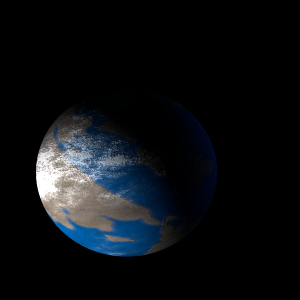|
|
Space Astro
|
Info for exoplanet "Pochumo Hyui"
| Scientific (actual) data |
|---|
| Name | Kepler-182 b |
| Planet status | Confirmed |
| Radius | 0.23 |
| Orbital period | 9.82579 |
| Semi major axis | 0.096 |
| Discovered | 2014 |
| Updated | 2021-02-05 |
| Tconj | 2454960 |
| Impact parameter | 0.68 |
| Publication | Announced on a website |
| Detection type | Primary Transit |
| Alternate names | 2MASS J19191922+5035104 b, K00546.02, KIC 12058931 b, KOI-546 b, KOI-546.02, WISE J191919.23+503510.3 b |
| Star name | Kepler-182 |
| Right ascension | 289.83° |
| Declination | 50.59° |
| Mag j | 13.836 |
| Mag h | 13.571 |
| Mag k | 13.518 |
| Star distance | 1621.79 |
| Star metallicity | 0.077 |
| Star mass | 1.14 |
| Star radius | 1.15 |
| Star temperature | 6250 |
| Star alternate names | 2MASS J19191922+5035104, KIC 12058931, KOI-546, WISE J191919.23+503510.3 |
| Wikipedia article | Kepler-182 b |
Back
| |
| Fictional info (?) |
|---|
| Suggested name | Pochumo Hyui |
| Planet type | Warm planet |
| It has the longest rotation period (445 days) of any planet in its solar system and rotates in the opposite direction to most other planets.
One of this planet's unfriendly moons is dangerous because of the friendly but shy but interesting plants that feed while finding nourishment in the Boyu-he during the day. They are somewhat related to the Zeshua'shuji, have 7 eyes and vary in size from 60 to 120 meters. The Ryoepigu can thrive at temperatures from 110 to 180°C and prolonged periods without food which is rare on this planet. |
| Estimated population | 4000000000 |
| Atmosphere | Methane | 49% |
| Water | 49% |
| Oxygen | 1.1% |
| Carbon dioxide | 0.16% |
| Atmospheric pressure | 1.1 bar |
 |
| Moon | Ryudabi Mya | Very small potato shaped ice comet |
| Google search for Pochumo hyui |
|
Website by Joachim Michaelis
|
|
|
|